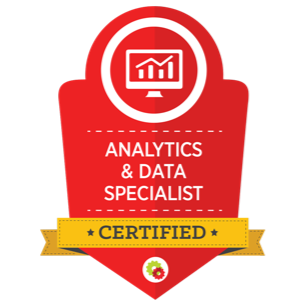MARKETING
Profit More, Work Less: 4 Steps to Niching Down For Your Agency


Ever wonder what the most successful agencies did differently than everyone else?
Was it luck, skill, hard work, the industry they chose, or something else?
Through my consulting work at Revenue Boost, I’ve worked with and taught over 400+ agencies how to scale their business.
From this, I’ve seen consistent patterns & traits in the ones who grow effortlessly…
Versus the ones who stay stuck for years – no matter how hard they work.
One key difference in approach stuck out to me.
I’ll illustrate what this one difference was with a story.
Once upon a time…
Two marketers graduated from business school with big plans to start their own agency.
Ready to conquer the world, they started cold calling, cold emailing, and doing everything under the sun to get clients.
And although they had the SAME levels of work ethic and talent…
One of them now has an 8-figure agency.
The other one of them is still freelancing odd jobs, barely making ends meet.
What did the successful one do differently?
He took a big risk and started turning down clients and projects.
Instead of offering everything to everyone, like most agency owners…
And being a jack of all trades but a master of none…
He decided only to serve Plumbers and be the best dang’ plumbing marketer on the planet.
With a goal to make their pipeline fuller than a broken toilet pipe.


He mastered the art of niching down and realized it would be easier to be the biggest fish in a small pond.
And you should too – and in this article, you’ll learn exactly how to define your own niche.
Now it may seem scary to turn down clients…and it may feel like you’re limiting yourself by focusing on only one client-type.
But it’s exactly the opposite. You’re actually limiting yourself by being everything for everybody.
Niching Down Can Help 2x-3x Your Revenues
One of my clients Lauren ran a digital agency offering everything under the sun.
Social media, paid ads, web dev, SEO, and she offered it to clients from many different industries.
Because of this, her agency stayed stuck at $25,000 a month and she couldn’t break through.
On top of that, she and her team worked so much harder than they had to and operations were messy.
Every client needed different things, required customization, and nothing was standardized.
We sat together to audit all her past clients, and we found that Medical practices were her best clients.
They were easy to sell, stayed the longest, and gave her the least amount of headaches and complaints.
So, she changed her entire business model to ONLY service this industry.
Then, she developed a standardized offer for that industry, rather than customizing everything.
One offer, to one target market. Afterwards, she started cold emailing businesses in her niche with her new offer.
The Results?
She 2X’d her revenues and grew to $52,000 in monthly revenue in not even four months time.
All from making one simple shift. One decision that can make everything easier, and you can do the same.
See, most agency owners and marketers start out with one or two clients, and then they get referred new clients from various industries.
Before they know it, they’re marketing everything for everyone and have NO idea who their ideal client is.
The Problem with Running a Business This Way Is That It Becomes Impossible to Scale.
Every single new client requires a ton of research, thought, and brainpower.


Because each new client has different needs, it leads to having no standardized processes and systems.
Which keeps the founder stuck in the business and unable to hire a team.
The other problem that arises is acquisition.
There are hundreds of thousands of agencies on the planet, and it’s really hard to stand out.
UNLESS you specialize.
When you specialize in a niche – let’s say, SEO for plumbers…
Then you aren’t competing with every other agency on the planet. You don’t look and sound just like them anymore.
Now, you’ve created your own tiny pond in which you can be a big fish.
There are way fewer agencies that specialize in plumbers or SEO, let alone both. So, you’ve eliminated the competition with one decision.
If a plumber was looking at two agencies – one that was a general digital agency and one that specializes in helping plumbers…
They almost always choose the agency that specializes in their industry and has testimonials from people just like them.
Not to mention, it’s easier to market when you have a clear niche in mind.
You know who you’re writing your content for…
You know who to send emails and social media DMs too…
You know exactly who to target in your ads….
You know what podcasts you should get booked on
And so on and so on.
Plus, you can charge whatever prices you want. Because you aren’t compared to the hundreds of thousands of agencies out there – you have a unique offer now.
Committing to one niche makes marketing easier, it makes selling easier, and it makes scaling easier.
You only have to be good at doing 1 thing for 1 person, and you can build systems and processes around it. This way, you can hire a team to take it over and be able to work less.


Become a Certified Analytics & Data Master
At Last, You’ll Have A Powerful Analytics Dashboard That Will Help You Make Smart Business Decisions
Now how do you do it? What if you don’t know who your ideal client is?
Step 1: Audit Your Current + Past Client List.
Write down every single client you’ve ever served, and group them by niche. Industry, location, size and so on.
Once you group them together, one niche might stick out for you already as your favorite type of client.
If it doesn’t, use my 7-Point checklist and rank each niche on a 1-5 scale.
These 7 criteria points are what makes a great niche.
#1 – Total Addressable Market:
How many businesses are in this market? Is it large enough to support your bigger goals? Is the market shrinking or growing? Make sure the niche is big enough for you and that it’s not declining.
#2 – Purchasing Power
Is this market (or at least a segment of it) able to afford what you want to charge?
Think back to if you’ve received a lot of pricing objections when you’ve sold to these people in the past.
#3 – Lifetime Value
How long did these clients stay? Were they one-and-done projects or did they stay with me for eternity?
The bigger the life-time value, the more money and time you can spend to acquire a client.
If the niche typically churns in a few months or only works with you for quick, one-off projects…
Then you’ll have to spend so much energy on sales and marketing to keep the business alive.
#4 – Strong Need & Pain
Does this market have an important problem to solve, one that they have to fix? Or, is what you sell just a “nice to have”?
If the latter, it’s going to be very hard to get clients.
If they can’t live without your solution, then getting clients will be a breeze.
#5 – Desire to Solve that Pain
It’s one thing for a market to have a problem, but they must also have a desire to solve that problem.
Even if they have the need that you fulfill, that’s not enough – they also have to care about fulfilling that need.
#6 – Easy to Reach
Is the market fairly easy to find online? Can you reach them via most advertising platforms and social channels? Are their groups and communities online?
If you’re targeting businesses that are hard to reach online, you’re creating one extra barrier to your success.
Step 2: Choose 1 Niche After Ranking Each of Your Past Clients.


Tally up all the rankings and pick the 1 with the highest score.
Don’t worry about making the wrong decision.
Consider this an experiment.
You aren’t married to your new niche, you can always change back in a few months if it doesn’t work out.
Step 3: Create a Pre-Packaged Offer for Your New Niche
The whole point of niching down is to create more focus and simplicity in your business
Part of this is about WHO you sell, part of this is about WHAT you sell them.
Start out by choosing 1 problem to solve for them, and 1 solution to that problem.
List out what the deliverables will be and what you want to charge.
Keep it simple! You can build upon this later.
Step 4: Test the Waters and Go Land 5 New Clients.
Before you make any drastic changes to your business, such as letting go of clients, changing your branding and website…
Test the waters first, and verify if this new niche is the direction you want to go.
Go land another 5 clients or so, and that’ll be enough to identify if these are really our ideal clients or not.
You might think they are at first but you’ll know for sure once you serve more of them.
Wrapping Up…
You know now the problems of being a jack-of-all-trades with no clear focus.
Every new client is a ton of work and requires customization…
And getting new clients is difficult because there’s nothing that stands out about your agency. You’ll look and sound like everyone else.
This means when you do niche down, and sell 1 offer to 1 target market…
Your workload will decrease. Each new client will be easier to serve than the previous one.
You’ll become world-class at helping your clients from all the focused repetition
You’ll quickly develop a reputation and become a big fish in a small pond.
In every way, it’ll become easier to grow, scale, attract, and retain clients.
Plus, you’ll have more fun and the business will be simpler & easier to run.
And with this knowledge…
You’ve learned the 5 simple steps to niching down.
So…
Time to get to work!
Put this into practice and watch it transform your business.



















